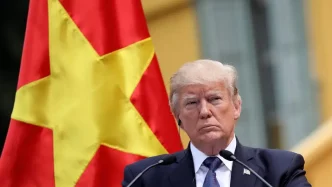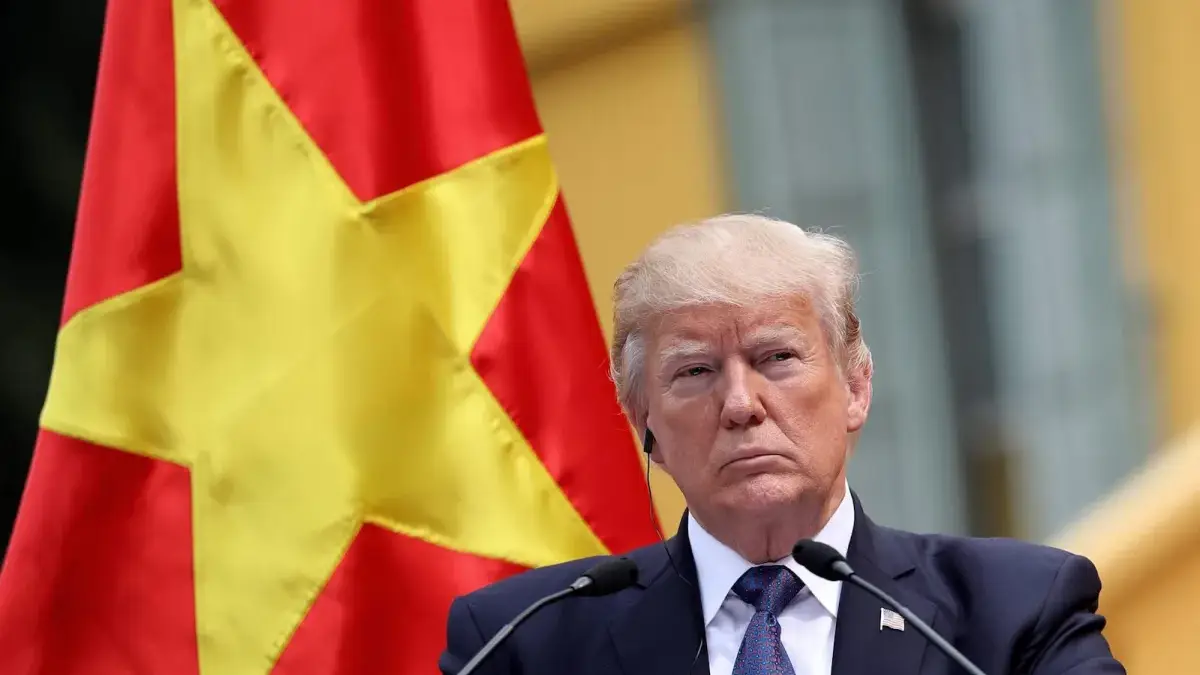In a significant development for Southeast Asian trade dynamics, US President Donald Trump has finalized a trade agreement with Vietnam, imposing a 20% tariff on Vietnamese exports to the US while eliminating Vietnam’s import duties on American goods. Announced on July 4, 2025, this deal—struck just before a critical July 9 deadline—has sparked both admiration and concern among regional players, particularly Thailand, which fears being outmaneuvered in its own negotiations with Washington. As Vietnam secures a competitive edge, Thai officials and industry leaders are racing to secure a better deal to protect their economic interests.
A Strategic Win for Vietnam
The US-Vietnam trade agreement marks a pivotal moment for Hanoi, reducing the initial 46% tariff imposed in April 2025 as part of Trump’s broader trade retaliations to a more manageable 20%. Additionally, a 40% tariff applies to goods transshipped through Vietnam from other countries, a measure aimed at curbing trade loopholes. In return, Vietnam has agreed to a complete elimination of import duties on US products, a move that underscores its willingness to compromise for market access. According to Bloomberg, Trump shared details of the deal on social media, highlighting it as the third such agreement following pacts with the UK and China.
Vietnam’s trade relationship with the US is critical. In 2024, it ranked as the sixth-largest supplier of goods to the American market, exporting nearly $137 billion and maintaining a significant trade surplus, third only to China and Mexico. Exports surged by 35% in May 2025 as Hanoi rushed to ship goods before the tariff deadline. The country has also become a manufacturing hub for textiles and sportswear, with factories producing for major US brands like Nike, Gap, and Lululemon Athletica, especially as production shifted from China to Vietnam in recent years.
Economically, the 20% tariff is estimated to impact Vietnam’s GDP by about 1%. If the tariff on transshipped goods reaches 40%, the hit could rise to 2.0-2.5%. Yet, Vietnam’s strategic importance as a counterbalance to China in Asia, coupled with its growing role in US supply chains, likely influenced Washington’s decision to offer relatively favorable terms.
Thailand’s Competitive Concerns
For Thailand, Vietnam’s success in securing a 20% tariff rate has raised alarm bells. Thai industry leaders and trade officials worry that if Bangkok is saddled with a similar or higher tariff, it will lose ground to its regional rival, whose production costs are already 5-10% lower. Thanakorn Kasetsuwan, president of the Thai National Shippers’ Council (TNSC), voiced these concerns, stating that Vietnam has done well to secure a 20% deal. He said that if Thailand received a similar tariff, that it could be disadvantage because Vietnam’s production costs are much lower. This means Vietnam holds a competitive advantage when exporting the same goods to the US. He added that Thailand hopes to negotiate a better deal, though the odds appear slim given Vietnam’s concessions.
Sanan Angubolkul, Honorary Chairman of the Thai-Vietnam Business Council, echoed this sentiment, noting that Vietnam’s agreement complicates Thailand’s push for a tariff below 20%. He highlighted procedural differences, saying that Vietnam works quickly, while Thailand has more complex and slower procedures. Decisions in Thailand involve more conditions than in Vietnam, and it seems unlikely that Thailand will achieve a 0% import tax or exemption for US goods. The disparity in agility and flexibility between the two nations could prove costly for Bangkok.
Thailand’s trade negotiations with the US began in earnest on July 3, 2025, following initial online discussions. Unlike Vietnam, which finalized its deal ahead of the July 9 deadline, Thailand is playing catch-up. Visit Limlurcha, Vice President of the Thai Chamber of Commerce, emphasized that Vietnam’s 20% tariff sets a benchmark for other ASEAN countries. While details beyond the tariff rate remain unclear, Thailand is banking on two scenarios: maintaining exports to Vietnam if tariffs match, or securing a slightly higher but still competitive rate. Limlurcha remains optimistic, citing Thailand’s lower trade surplus compared to Vietnam and its proactive efforts to address transshipment fraud—where goods from other countries are mislabeled as Thai for export to the US—as potential leverage for a better deal.
Transshipment Fraud: A Double-Edged Sword
One area where Thailand hopes to distinguish itself is in tackling transshipment fraud, a persistent issue that has drawn scrutiny from the US. Kriengkrai Thiennukul, Chairman of the Federation of Thai Industries (FTI), told Krungthep Turakij that this practice has harmed over half of Thailand’s 47 industrial sectors, threatening small and medium enterprises (SMEs) with potential closures if unaddressed. He views Vietnam’s deal as a “test answer” for Thailand, suggesting that Bangkok could aim for a 15% tariff on direct exports and a 30% rate on transshipped goods, compared to Vietnam’s 20% and 40%, respectively. However, he cautioned that the US is closely monitoring industries to block competitors, meaning Thailand might still face the same 40% penalty on transshipped goods.
Thailand’s commitment to curbing fraud could bolster its negotiating position, as it demonstrates goodwill to US trade officials. Yet, the challenge remains steep, as Vietnam’s lower production costs and zero import duties on US goods give it a structural advantage that Thailand struggles to match without risking domestic industries.
Industrial Impacts and Investor Sentiment
The ripple effects of the US-Vietnam deal extend beyond tariffs to industrial and investment landscapes. Jareeporn Jarukornsakul, Chairman of the Executive Committee and Group CEO of WHA Corporation Public Company Limited, told Krungthep Turakij that Vietnam’s industrial parks stand to benefit significantly from the reduced 20% tariff, down from an initial 46%. For Thailand, she noted expectations of a tariff reduction from 36% to 18%, with aspirations to push it down to 10%. A survey conducted after the US first imposed tariffs revealed that 70% of clients exporting to the US could manage a 10% tariff, while 30% could accept up to 20%. If Thailand faces a tariff of 18%, or even lower, it would be promising.
Thai investors in Vietnam are also bracing for impact, as Sanan Angubolkul pointed out. The extent of disruption will depend on how negotiations unfold with other regional players like Indonesia and Malaysia. For now, Thailand’s negotiation team, led by Deputy Prime Minister Pichai, is under pressure to deliver results that safeguard both exporters and domestic producers.
Broader Implications for ASEAN
Vietnam’s deal with the US is a wake-up call for ASEAN as a whole. As the first in the region to secure such an agreement, it sets a precedent that could shape negotiations for other member states. Thailand, with its similar economic structure to Vietnam, faces the dual challenge of matching Hanoi’s tariff concessions while protecting its own industries—a balancing act complicated by slower decision-making processes. Meanwhile, the US’s focus on transshipment fraud signals a broader push for transparency in trade practices, which could either help or hinder countries depending on their compliance efforts.
For global readers, it’s worth noting that ASEAN (the Association of Southeast Asian Nations) is a regional bloc of ten countries, including Vietnam and Thailand, focused on economic integration and political cooperation. Trade agreements with major powers like the US are critical for these nations, as they often rely on exports to drive growth. Vietnam’s role as a manufacturing hub, partly due to its lower labor costs and strategic location near China, contrasts with Thailand’s more diversified economy, which includes strong automotive and tourism sectors but faces higher production expenses.
Looking Ahead: A Race Against Time
As Thailand navigates its trade talks with the US, the shadow of Vietnam’s agreement looms large. Securing a tariff lower than 20% would be a coup for Bangkok, signaling its ability to compete on the global stage despite structural disadvantages. However, with Vietnam’s production cost advantage and willingness to eliminate import duties, Thailand’s path to a favorable deal remains uncertain. The coming weeks will test whether Thai negotiators can leverage their efforts on transshipment fraud and trade balance disparities to carve out a competitive position—or whether they will be forced to play catch-up in an increasingly uneven regional landscape.
















